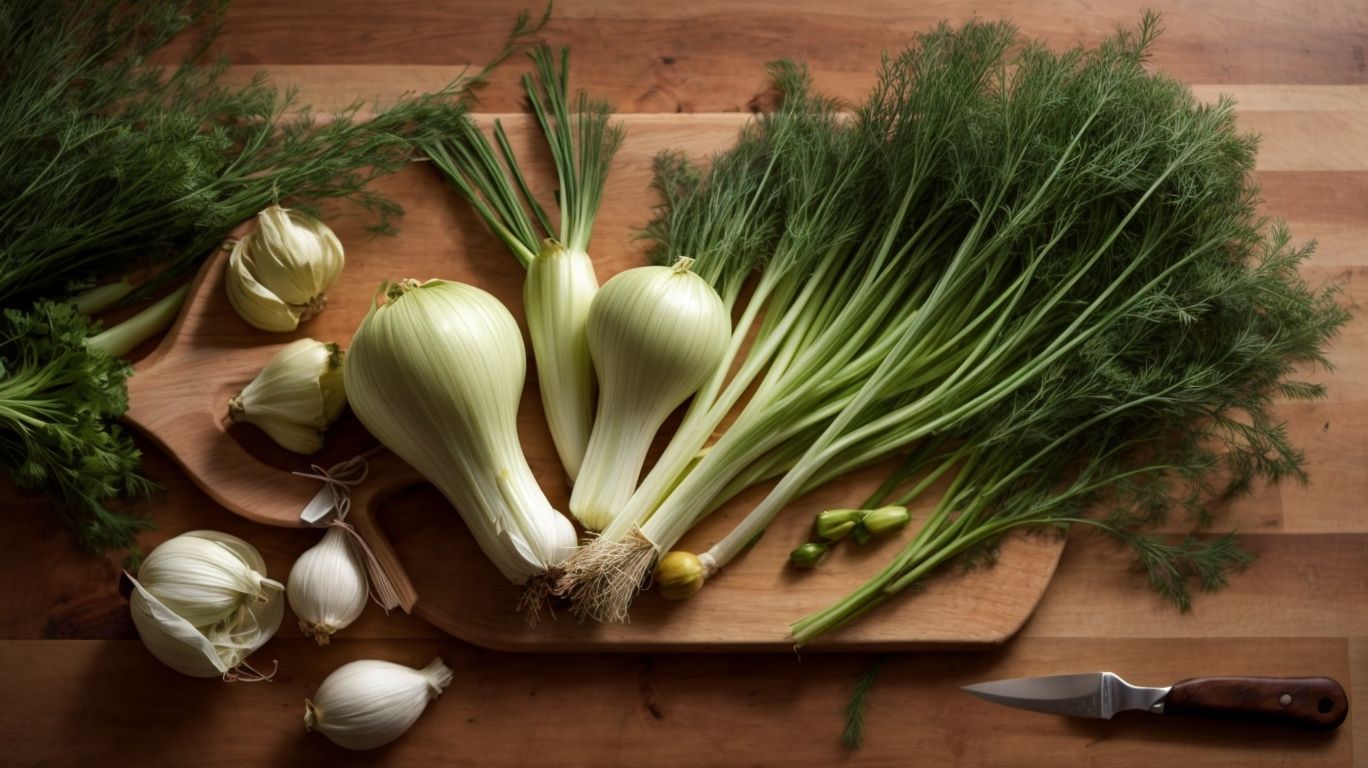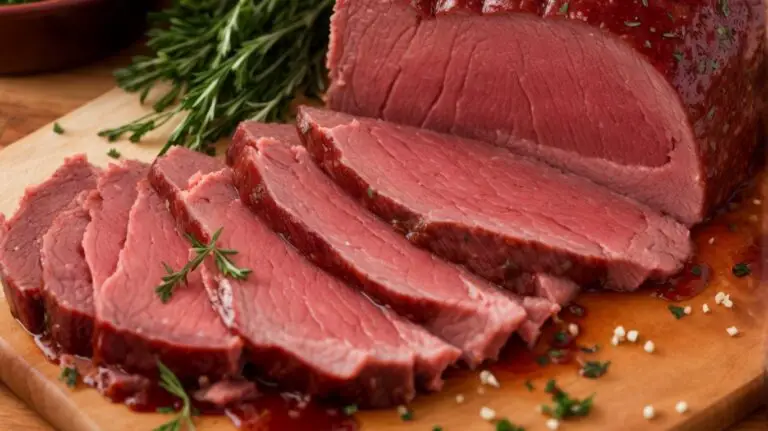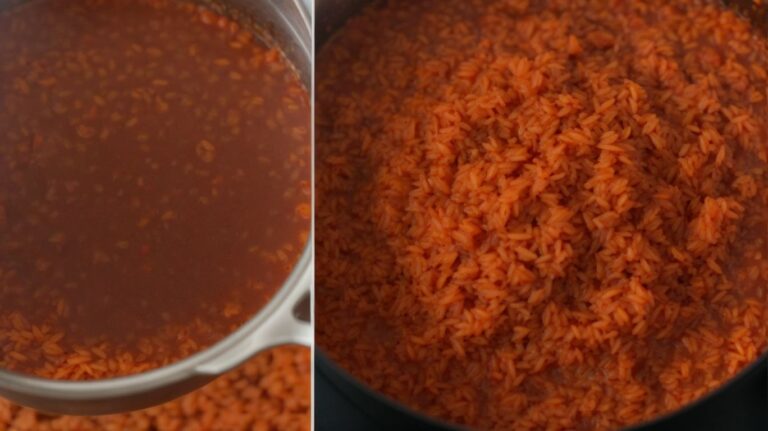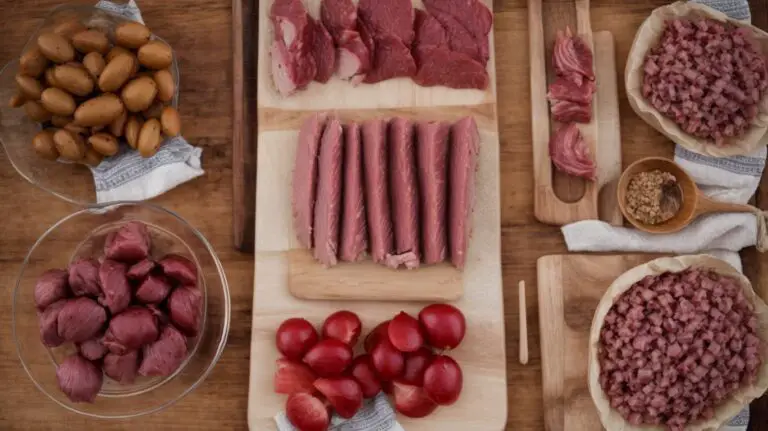How to Cook Fennel?
Are you looking to add a unique and flavorful ingredient to your cooking repertoire? Look no further than fennel!
In this article, we will explore everything you need to know about this versatile vegetable – from what it tastes like to how to select and store it.
We will also delve into the various methods of preparing and cooking fennel, as well as some delicious dishes you can incorporate it into.
Get ready to elevate your culinary creations with the addition of this delicious and aromatic ingredient.
Key Takeaways:
About Fennel
Fennel, a versatile vegetable known for its unique flavor and numerous health benefits, is a popular ingredient in various culinary creations.
Describing the taste of fennel can be a delightful challenge, as its mild licorice-like essence complements both savory and sweet dishes. The crunchy texture of the fennel bulb adds a refreshing element to salads, while its aromatic seeds are often used in spice blends and teas.
Rich in fiber, vitamin C, and potassium, fennel not only enhances the flavor of dishes but also provides essential nutrients that promote digestion and overall well-being. Whether roasted, braised, or raw, fennel is a versatile ingredient that can be incorporated into soups, stews, roasted vegetable medleys, or enjoyed simply sliced in a fresh salad.
What is Fennel?
Fennel, classified as a vegetable in the carrot family, is renowned for its delicate yet aromatic flavor that resembles a mix of dill and anise.
Along with its unique taste, fennel is also valued for its crisp texture and versatility in cooking. The bulb of the fennel plant, often used raw in salads or roasted to enhance its sweetness, adds depth and complexity to dishes with its refreshing licorice-like undertones.
Fennel’s fronds, which resemble dill in appearance, can be utilized as a flavorful herb, providing a fresh and herbaceous element to various recipes, such as seafood dishes or homemade sauces.
What Does Fennel Taste Like?
Fennel offers a unique flavor profile with subtle hints of anise, making it a versatile ingredient that adds depth and complexity to dishes.
Its distinct taste is often described as a blend of licorice, citrus, and herbs, creating a refreshing and aromatic essence in both savory and sweet recipes. Whether you roast it, sauté it, or enjoy it raw, fennel’s anise-like notes shine through, providing a pleasant contrast to richer flavors. The bulb, which is crisp and slightly sweet, can be shaved into salads, grilled as a side dish, or caramelized to bring out its natural sweetness, adding a unique flavor dimension to any meal.
What Part of Fennel Can Be Eaten?
In fennel, both the bulb and fronds are edible, offering different textures and flavors that can be creatively incorporated into various dishes.
The fennel bulb is the most commonly used part of the plant, known for its crisp texture and mild anise-like flavor. It can be sliced thin and added to salads for a refreshing crunch or roasted with olive oil and seasonings to bring out its natural sweetness.
On the other hand, the delicate fronds of fennel are often used as a garnish, lending a hint of licorice flavor to dishes like soups, seafood, and roasted vegetables. Their feathery appearance adds a touch of elegance to plating, enhancing both visual appeal and taste.
How to Select and Store Fennel?
When selecting fennel, opt for bulbs that are firm, with no signs of wilting or discoloration, to ensure freshness and optimal flavor in your dishes.
Fresh fennel bulbs should have a bright white or pale green color, with tightly packed layers. The stalks and fronds should be vibrant and fresh-looking, indicating a recent harvest.
Store fennel in the crisper drawer of your refrigerator, wrapped loosely in a damp paper towel to maintain moisture. Avoid washing the bulb until you’re ready to use it, as excess moisture can cause it to deteriorate more quickly.
How to Prepare Fennel?
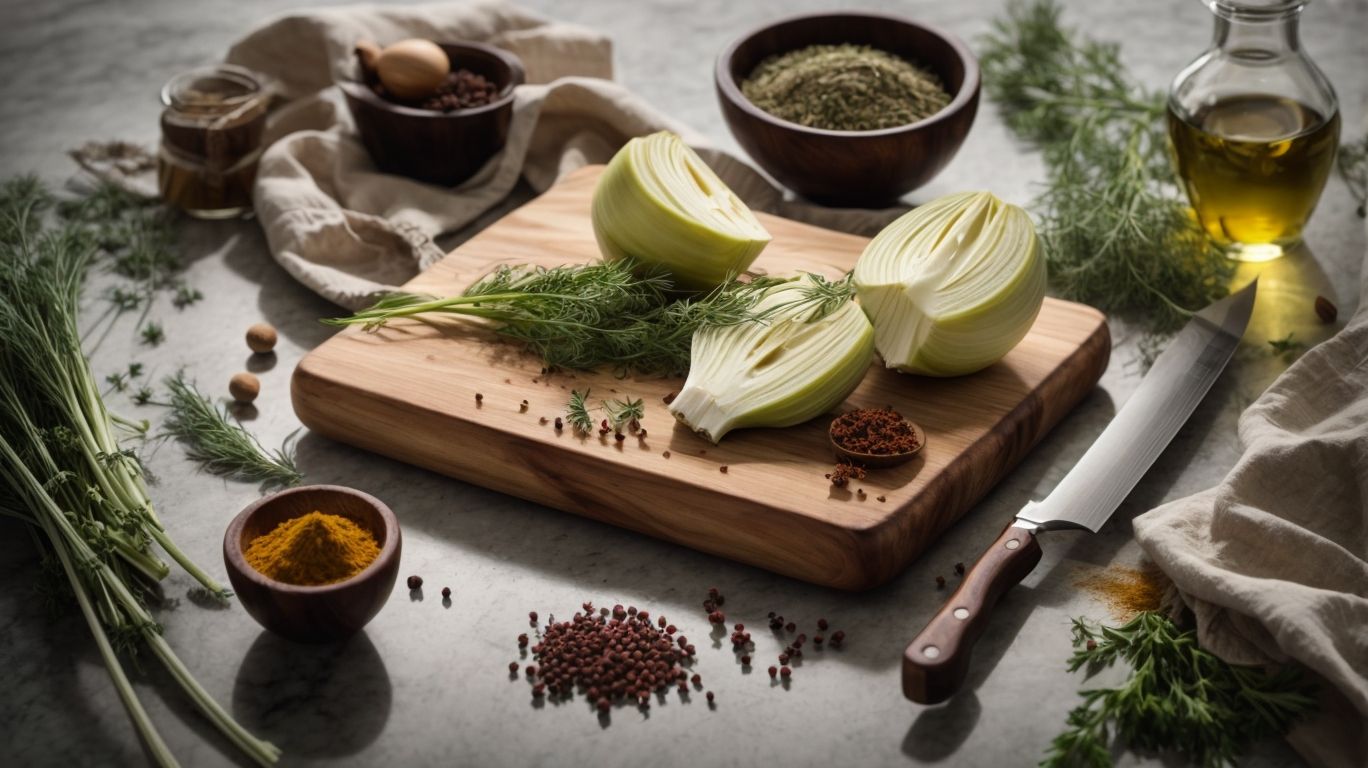
Credits: Poormet.Com – Nathan Nguyen
Preparing fennel involves trimming the bulb, removing stalks and fronds, and cutting it into desired shapes for various culinary applications, unlocking its full flavor potential.
Start by washing the fennel bulb under cold water to remove any dirt residue. Next, carefully trim off the root end and any discolored outer layers. To reveal the tender core, cut the fennel vertically in half, then proceed to slice it thinly for a delicate texture. For a bolder flavor profile, try dicing the fennel into bite-sized pieces, perfect for roasting or sautéing. Whether sliced, diced, or julienned, mastering the art of cutting fennel opens up a world of culinary creativity.
Trimming the Fennel Bulb
Trimming the fennel bulb involves removing the root end and any tough outer layers, ensuring a clean and fresh base for further culinary preparations.
Once the root end is trimmed, the tough outer layers should be carefully peeled away to reveal the crisp, white inner bulb. These outer layers can often be fibrous and may not impart the best flavor, so discarding them is crucial for a more enjoyable dining experience. By ensuring the bulb is properly trimmed, you set the stage for the delightful anise-like flavor to shine through in your dishes, enhancing the overall taste and presentation.
Removing the Stalks and Fronds
Removing the stalks and fronds from fennel is essential to focus on the flavorful bulb, ensuring a more concentrated fennel taste in your dishes.
Separating the stalks and fronds also allows for a cleaner and more visually appealing presentation of dishes such as salads, soups, or roasted fennel. The removal process entails cutting off the stalks where they meet the bulb and setting them aside for other culinary uses. The delicate fronds, reminiscent of dill in appearance, can be reserved as a garnish or seasoning. By extracting the bulb, you can enjoy the sweet, anise-like flavor that defines fennel, enhancing the overall taste profile of your recipes.
Cutting and Slicing the Fennel Bulb
Cutting and slicing the fennel bulb into wedges, slices, or julienne pieces allows for versatile cooking methods and texture variations in your dishes.
Apart from wedges, slices, or julienne cuts, dicing the fennel bulb finely is another technique that brings a subtle flavor to salads and stir-fries.
When thinly shaving the fennel, it can add a delicate crunch and mild anise-like taste to raw dishes like slaws or carpaccio.
Experimenting with different shapes not only impacts the cooking process but also elevates the visual appeal of your culinary creations, making them more appetizing and appealing.
How to Cook Fennel?
Cooking fennel offers a range of possibilities, from roasting and grilling to sautéing and braising, providing diverse textures and flavors for your culinary creations.
If you opt for roasting, the fennel develops a tender texture with a caramelized exterior, enhancing its natural sweetness.
On the other hand, grilling imparts a smoky essence, perfect for adding depth to salads or as a standalone side dish.
Braising the fennel in broth or wine yields a soft, melt-in-your-mouth consistency, ideal for hearty stews or served alongside a succulent roast.
Roasting Fennel
Roasting fennel with olive oil and seasonings brings out its natural sweetness and caramelization, creating a flavorful side dish or addition to salads.
During the roasting process, the fennel undergoes a remarkable transformation. The high heat helps to soften its texture while intensifying its flavors. The olive oil not only aids in caramelizing the edges of the fennel but also infuses it with a rich, earthy essence.
By carefully selecting complementary seasonings such as sea salt, black pepper, or fresh herbs like thyme or rosemary, you can elevate the overall taste profile of the dish. These seasonings not only enhance the sweetness of the fennel but also add layers of depth and complexity to the final product.
Grilling Fennel
Grilling fennel wedges with a touch of lemon adds a smoky char and citrusy brightness, enhancing its natural flavors in a delicious and visually appealing manner.
This technique involves preparing the fennel by slicing it into wedges, brushing them with a mixture of oil, lemon juice, and seasonings, and then grilling them over medium-high heat until they develop those coveted grill marks. The heat from the grill caramelizes the natural sugars in the fennel, resulting in a slightly sweet and smoky flavor profile.
The addition of lemon not only infuses a zesty freshness into the fennel but also helps cut through any potential bitterness, offering a well-balanced taste. The combination of charred edges from the grill and the bright citrus notes from the lemon creates a harmonious contrast that elevates the overall dish.
Sautéing Fennel
Sautéing fennel in olive oil creates a tender texture and caramelized surface, ideal for incorporating into pasta dishes or as a standalone side with roasted cauliflower.
When sautéing fennel, the gentle heat of the olive oil brings out the vegetable’s natural sweetness, balancing its subtle licorice flavor harmoniously with the savory notes of the oil. This method not only enhances the fennel’s flavor but also adds a delightful crunch to its texture, adding depth to any dish it accompanies. Pairing sautéed fennel with pasta, such as linguine or penne, creates a hearty and satisfying meal, while incorporating it in roasted cauliflower dishes brings a unique twist to classic recipes.
Braising Fennel
Braising fennel in aromatic vegetable broth yields soft, flavorful results that can be enjoyed as a standalone dish or incorporated into hearty soups and stews.
Braising is a cooking method that involves first searing the ingredient then simmering it slowly in a flavorful liquid, allowing the flavors to meld together. When fennel is braised, it becomes tender while absorbing the savory essence of the vegetable broth, resulting in a delicious and aromatic dish.
The versatility of braised fennel makes it a go-to ingredient for enhancing the depth of flavor in a variety of dishes. Whether you add it to a vegetable soup for a burst of freshness or incorporate it into a hearty stew for a robust texture, braised fennel adds a unique touch to any recipe.
Adding Fennel to Soups and Stews
Incorporating fennel into soups and stews enriches the flavor profile with its distinctive taste, showcasing the culinary creativity of chefs in blending ingredients for hearty dishes.
With its subtle licorice undertones and aromatic sweetness, fennel adds depth and complexity to the dish, transforming a simple soup or stew into a gourmet creation. Chefs often use fennel seeds, bulb, or fronds to infuse their culinary creations with a refreshing herbal note that pairs exceptionally well with seafood, pork, and root vegetables.
What Dishes Can Fennel Be Used In?
Fennel’s versatility shines in various dishes, from refreshing salads and comforting soups to creamy risottos, exquisite fish preparations, and hearty meat-based creations.
Salads are uplifted by the crisp, anise-like crunch of thinly sliced fennel bulbs, adding both texture and a hint of sweetness.
When simmered in a broth, fennel releases its delicate aroma, infusing soups such as the classic Italian Zuppa di Finocchio with its unique flavor profile.
In risottos, fennel seeds can provide a subtle licorice note, enhancing the dish’s overall depth.
Grilled or roasted fennel pairs beautifully with seafood, balancing the richness of fish and shellfish with its refreshing herbal undertones.
For meat lovers, slow-cooked fennel can tenderize tougher cuts, bringing a fragrant touch to stews and braises.
Fennel Salad
Fennel salad with a zesty lemon dressing and hints of olive oil offers a refreshing and crunchy texture, making it a delightful starter or side dish for any meal.
When preparing a fennel salad, it’s essential to slice the fennel bulb thinly to ensure a delicate crunch that pairs perfectly with the tangy lemon flavor. Incorporating fresh ingredients like crisp lettuce and juicy cherry tomatoes adds a variety of textures and colors to the salad, creating a visually appealing dish. The drizzle of fruity olive oil enhances the overall taste and richness of the salad, balancing out the citrusy notes of the dressing. Tossing in some toasted nuts or seeds can provide a delightful nuttiness and crunch factor, elevating the salad to a new level of gastronomic delight.
Fennel Soup
Fennel soup, simmered in aromatic vegetable broth, delivers a comforting and velvety experience with rich flavors, showcasing the versatility of this vegetable in creating soul-warming dishes.
When preparing fennel soup, one can experiment with various additions such as leeks, potatoes, or even a dash of cream to elevate the creamy texture and taste.
The beauty of fennel lies in its ability to blend harmoniously with other ingredients, allowing for subtle nuances in flavor profiles.
Customizing the seasoning levels, whether opting for a gentle hint of spice or a robust savory mix, enables you to cater to your unique taste preferences and create a personalized bowl of warmth.
Fennel Risotto
Fennel risotto enriched with Parmesan cheese offers a creamy and indulgent dish that balances the vegetable’s subtle sweetness with the richness of cheese, creating a sophisticated dining experience.
Preparing this exquisite dish requires careful attention to detail and a touch of culinary finesse. To start, sauté finely chopped fennel bulb in olive oil until it turns translucent, releasing its aromatic flavors. Then, add Arborio rice, allowing it to toast slightly before deglazing the pan with white wine.
Gradually ladle in warm vegetable broth while stirring continuously to coax out the rice’s creamy texture. The star ingredient, Parmesan cheese, comes into play towards the end, adding a velvety finish to the risotto. The interplay of flavors between the fennel and cheese creates a harmonious blend of savory and slightly sweet notes, elevating this dish to a delightful culinary masterpiece.
Fennel and Fish Dishes
Fennel paired with fish dishes or roasted cauliflower presents a symphony of flavors, combining the vegetable’s herbal notes with the seafood’s delicate taste or the cauliflower’s earthy essence.
When fennel’s licorice-like undertones intermingle with the tender flesh of fish, the result is a tantalizing blend that excites the palate and awakens the senses. This versatile herb can enhance a variety of seafood preparations, from grilled salmon to seared scallops, offering a refreshing and aromatic kick.
In the realm of roasted cauliflower, fennel seeds sprinkled over the cruciferous vegetable before it hits the oven create a mesmerizing fusion of flavors that transcend the ordinary. The slight sweetness of fennel balances the nuttiness of the cauliflower, creating a harmonious duet that surprises and delights.
Fennel and Meat Dishes
Fennel integrated into meat dishes or paired with buffalo milk cheese elevates the dining experience with contrasting textures and bold flavors, showcasing the vegetable’s versatility in meat-centric meals.
When combined with succulent cuts of lamb, fennel adds an intriguing aromatic element that deepens the overall profile of the dish by offering a refreshing note amidst the rich flavors.
When sprinkled atop a grilled steak, fennel’s slight sweetness can provide a harmonious balance to the savory beef, creating a complex yet balanced taste sensation that delights the palate.
Frequently Asked Questions
What is fennel and how to cook it?
Fennel is a bulbous vegetable with a licorice-like flavor. To cook it, trim off the stalks and fronds, then either slice or chop the bulb to use in a variety of dishes.
How do you prepare fennel for cooking?
To prepare fennel, cut off the stalks and fronds and remove any tough outer layers. Cut the bulb in half and remove the core, then slice or chop as desired.
Can you eat fennel raw?
Yes, fennel can be eaten raw and is often used in salads. It has a crisp texture and refreshing flavor that pairs well with other vegetables.
What are some easy and delicious ways to cook fennel?
Fennel can be roasted, sautéed, braised, or grilled. You can also add it to soups, stews, pastas, and even use it as a topping for pizza.
How long does it take to cook fennel?
Cooking time for fennel will vary depending on the method used. Roasting or grilling will take about 20-25 minutes, while braising can take up to 45 minutes. Sautéing fennel will only take about 10 minutes.
Can you freeze cooked fennel?
Yes, cooked fennel can be frozen for later use. Just make sure to cool it completely before placing it in an airtight container or freezer bag. It will keep for up to 3 months in the freezer.

